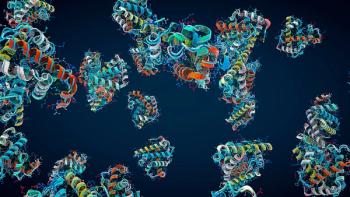
- BioPharm International-02-01-2012
- Volume 25
- Issue 2
A 25-Year Retrospective on Mammalian Cell Culture
This month, we revisit "Industrial-Scale Mammalian Cell Culture, Part I: Bioreactor Design Considerations."
Twenty-five years ago, as today, selection of the bioreactor used for large-scale cell culture was a key component of the success of the production process (1). Kim L. Nelson, PhD, the orginal author of the paper, now director of strategic consulting at CRB Consulting Engineers talks to BioPharm International about bioreactor design for large-scale mammalian cell culture.
BioPharm: In 1988, the size limits for suspension mammalian-cell culture ranged from 8000–10,000 L. Is that still the case?
Nelson: Much has changed in the last 25 years, and the upper limits of mammalian cell-culture suspension bioreactors have increased dramatically. Currently, the largest bioreactors are 25,000 L for suspension cell culture, and around 5,000 L for microcarrier cell culture. It's ironic, however, the increasing titers being achieved in cell culture today may actually make these scale systems unnecessary. The required scale of bioreactors necessary to meet market demands are coming down, in some cases to the point where single-use bioreactors are feasible for commercial products (2).
BioPharm: Given the evolution of production-grade cell lines, is genetic stability still the most important determinant of scale-up potential?
Nelson: Genetic stability is still paramount in a production cell line. If the cell line is unstable, it is unsuitable for large-scale culture and GMP production. Metabolic potential, however, is also now a key requirement for production cell lines. Understanding a cell line's metabolism and nutrient demands helps achieve successful commercial-scale production.. The fed-batch processes used today are quite sophisticated in their feeding strategies, and have produced phenomenal results (2). Such productivity has been achieved by numerous companies, and once developed, can often be rapidly re-optimized for subsequent projects that use the same host cell line.
BioPharm: Is a stirred-tank bioreactor still the most common choice for a large-scale bioreactor?
Nelson: Yes, stirred-tank bioreactors are still the mainstay of cell-culture based biopharmaceutical production. There are also a variety of other, specialized, bioreactors that have been marketed over the years, a number of which are intended for adherent cells and vaccine production. The traditional stainless-steel bioreactor designs offered by the equipment suppliers have been standardized, with a menu of options such as different impellers, or sparging systems. Even specialized (and effective) perfusion systems are being marketed that allow very sizable perfusion bioreactor systems. The industry is increasingly turning toward single-use bioreactors. In this area we are seeing an explosion of novel bioreactor designs each trying to gain a foothold in this market. Again, the stirred-tank bioreactor is emerging as the single-use system of choice for larger volume commercial production.
REFERENCES
1. K.L. Nelson, BioPharm. Int. 1 (2), 42–46 (1988).
2. J. P. Smelko et al., Biotechnol. Prog. 27 (5), 1358–1364 (2011).
Articles in this issue
almost 14 years ago
BioPharm International, February 2012 Issue (PDF)almost 14 years ago
Trends and Challenges in Biologics Outsourcing: A Q&A with Stephen Tayloralmost 14 years ago
Biomanufacturing Outsourcing Outlookalmost 14 years ago
Preparing For the New Chinaalmost 14 years ago
What the 2011 Census of India Reveals for Pharmaalmost 14 years ago
Saving the Next Generation of Regulatory Scientistsalmost 14 years ago
A Risk-Based Approach to Transferring a Mature Biopharmaceutical Processalmost 14 years ago
PQRI Case Study: Facility Biocontainment and Inactivationalmost 14 years ago
Assessing the Risk of Leachables from Single-Use Systemsalmost 14 years ago
Sustainable InvestmentNewsletter
Stay at the forefront of biopharmaceutical innovation—subscribe to BioPharm International for expert insights on drug development, manufacturing, compliance, and more.



